Welcome to Studio20 Architects
As Studio20 Architects, we’re the experts in loft conversions and turning your lofts into amazing new spaces. Loft conversion architecture projects can be tricky, but we’re here to make it easy for you. We’ll work with you every step of the way – from site survey, brainstorming the initial design, and planning permission to overseeing the construction and finishing touches. As a trusted Loft conversion company, we will make sure we bring your dream home to life.
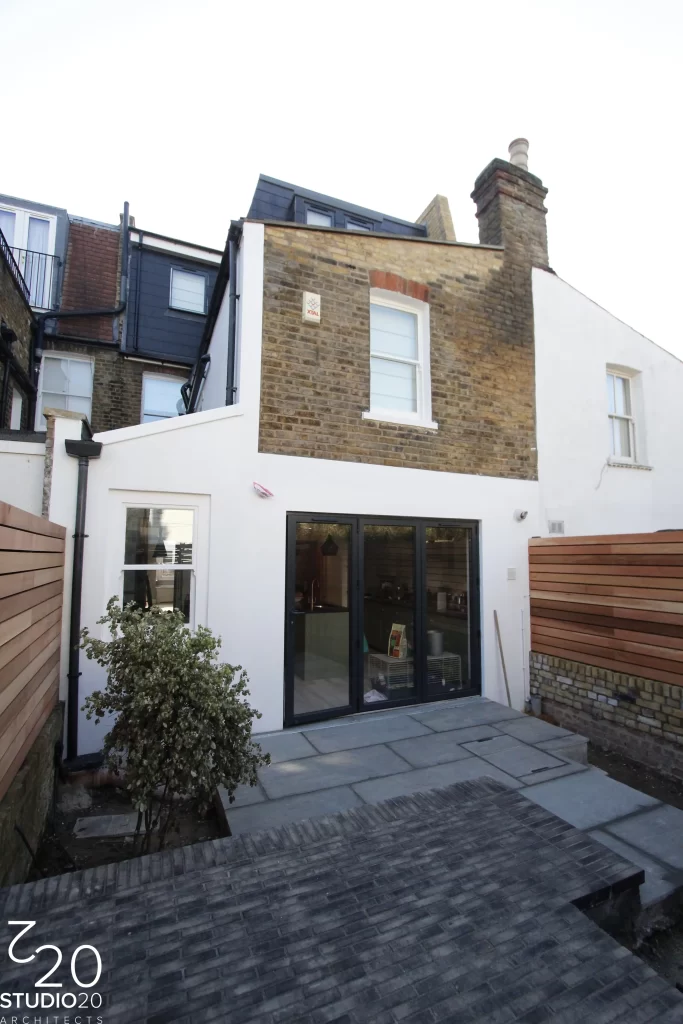
Loft Conversions
Loft conversions represent a fantastic way of extending your house and adding value to your home. Whether you need extra space for your growing family, a home office space or a new hobby, a loft conversion can be the ideal solution for you.
As a specialist loft conversion company, we successfully completed many loft conversion projects. There are many loft conversion types, and we will help you choose the one that meets your requirements. We are here to bring your loft conversion ideas to life.
Loft Conversion Type
There are several types of loft conversions, each catering to different needs, space availability, and architectural considerations. Here are some common types of loft conversions:
Loft Conversion Architects, Designers & Planning Consultants
The process of getting your loft converted might seem stressful, but we are here to help you every step of the way. Our team of architects, interior designers, and architectural planners have extensive expertise in the industry and they can work with all property types. Contact us now to schedule a consultation with a loft conversion architect at Studio 20 Architects.
We can take care of all aspects of your loft conversion project including site survey, planning application drawings, building regulation drawings, and structure calculations
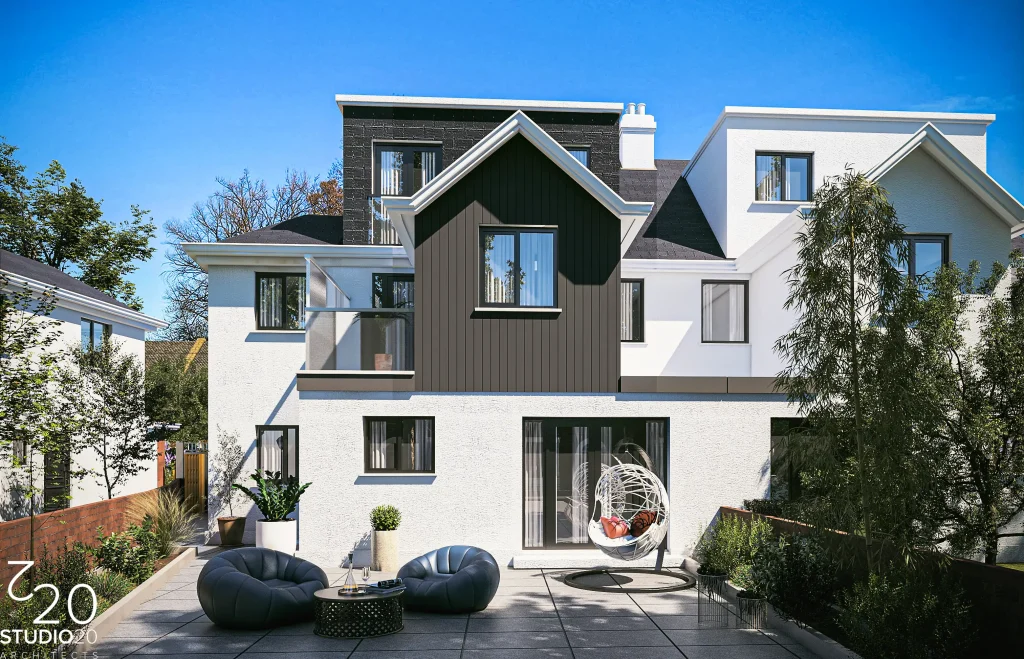
Loft Conversion Planning Permissions
At Studio 20 Architects, we are here to take the complexity out of obtaining planning permission from your council for your project.
We have experienced loft conversion architectural designers and planners. They will prepare astute design and architectural planning strategies. You can rest assured that we will help you secure your planning permission with ease. Contact us now to speak with one of our experts in loft conversions about your project.
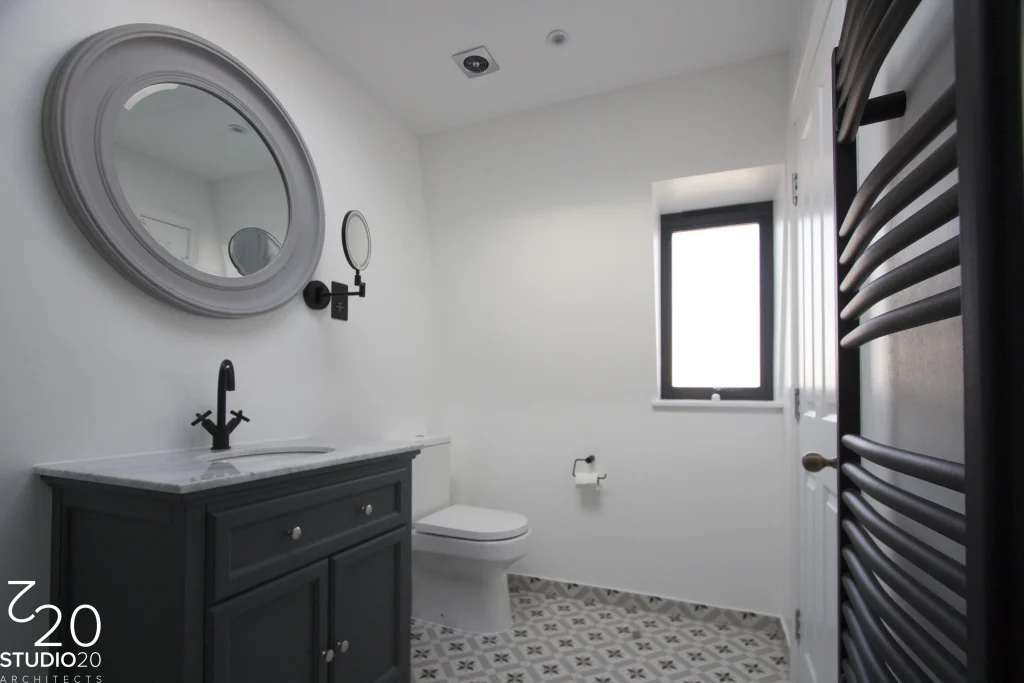
Get A Free Quote For Your Loft Conversion Project
Whether you already have some ideas about what you want or you would like to find out more about your options, feel free to contact us. We will arrange an initial consultation at a time that is convenient for you.
During the consultation, our experts will listen to your ideas and give you professional advice. We will also provide you with a free quote for your project. Please give us a call or send us an email to get in touch with us..
Here’s what our clients have to say.
Dormer Loft Conversion
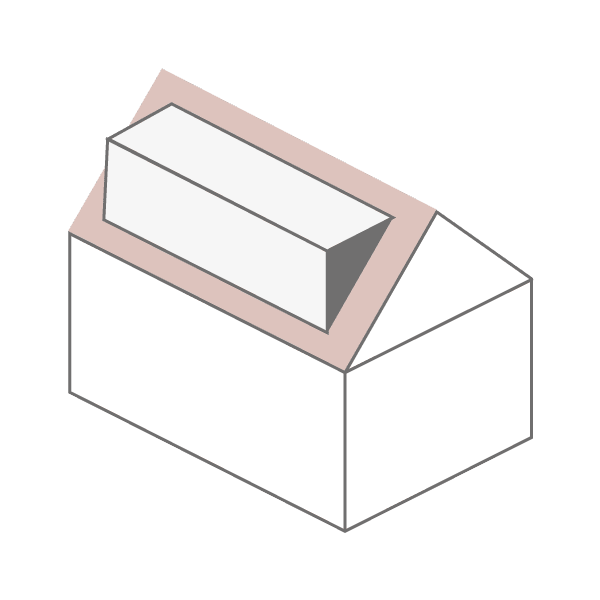

A Dormer Loft Conversion is a popular and versatile way to create additional living space within your home. Unlike other loft conversion types, a dormer extension involves extending the existing roof to create a vertical wall, which not only provides more headroom but also allows for the installation of larger windows.
Why Choose a Dormer Loft Conversion?
Dormer loft conversions offer several benefits that make them a top choice for homeowners:
Increased Space: A dormer loft conversion can significantly increase the usable floor area of your loft, providing ample space for an extra bedroom, home office, playroom, or any other living space you desire.
Natural Light: The addition of larger windows in the dormer extension floods the room with natural light, creating a warm and inviting atmosphere.
Enhanced Headroom: The vertical walls of a dormer extension provide more headroom compared to traditional loft conversions, making the space more comfortable and functional.
Customization: Whether you prefer a contemporary or traditional design, our expert team can customize the dormer loft conversion to match your aesthetic preferences and lifestyle.
Increased Property Value: A well-designed dormer conversion not only adds valuable living space but also increases the overall value of your property, making it a wise investment for the future.
Mansard Loft Conversion


The construction of a Mansard Loft Conversion involves elevating the party wall, which is the wall shared with neighboring properties. While the roof retains its flat structure, one of the external walls slants gently inward. These mansard conversions are commonly situated at the back of a residence and, while applicable to various property styles, they enjoy the greatest popularity among terraced houses.
Benefits of a Mansard Loft Conversion:
Generous Space: A mansard loft conversion provides a considerable amount of usable floor space. The sloping roof and vertical walls create an expansive area that can be customized to meet your specific needs.
Architectural Charm: The distinct architectural style of a mansard roof not only enhances your property’s curb appeal but also adds a touch of elegance that stands out in the neighborhood.
Increased Natural Light: Dormer windows integrated into the mansard loft conversion design allow abundant natural light to flood the converted loft, creating a bright and inviting atmosphere.
Versatility: From bedrooms and home offices to entertainment rooms and playrooms, a mansard loft conversion offers versatility in function, accommodating your family’s changing needs.
Property Value: An expertly executed loft conversion can significantly increase the value of your property, making it a wise investment for the future.
Hip to Gable Loft Conversion


A Hip to Gable Loft Conversion is a popular and ingenious way to maximize your home’s potential. It involves extending the sloping “hip” roofline of your property into a vertical “gable” wall. This architectural adjustment not only creates a more spacious and functional interior but also enhances the overall aesthetic appeal of your home
Advantages of a Hip to Gable Loft Conversion
Increased Space: Whether you’re in need of an extra bedroom, a home office, or a playroom, a hip to gable loft conversion provides you with the space you require without the need for a full-scale extension.
Enhanced Property Value: Investing in a hip to gable loft conversion can significantly boost the value of your home. The additional living space and modern design elements are attractive features for potential buyers.
Natural Light: With the addition of strategically placed windows and possibly even dormer loft conversions, your new loft space will be flooded with natural light, creating a bright and inviting atmosphere.
Customization: Your vision is our priority. Our team will work closely with you to understand your preferences and needs, ensuring that your hip to gable loft conversion aligns perfectly with your lifestyle.
L-shaped Loft Conversion


An L-shaped Loft Conversion is a fantastic way to add both value and space to your property. This type of conversion extends along two sides of your roof, providing ample room for creativity in design. The additional angles and dimensions not only enhance the overall appearance of your home but also allow for unique interior layouts.
The Benefits of Our L-Shaped Loft Conversion:
Increased Space: With an L-shaped loft conversion, you’ll enjoy a significantly larger living area compared to traditional conversions. The added space opens up various possibilities for room arrangements and interior design.
Abundant Natural Light: The incorporation of multiple windows in an L-shaped loft conversion ensures that natural light floods your new space. This creates a bright and inviting atmosphere, making the area perfect for relaxation and productivity.
Customization: Our expert architects work closely with you to design a tailored space that suits your specific needs and preferences. Whether it’s a cozy reading nook under a sloping ceiling or a spacious walk-in closet, the design options are endless.
Functional Layouts: The L-shaped loft conversion design allows for seamless partitioning of the space into distinct zones. From bedrooms with en-suite bathrooms to a combination of bedroom and office space, the layout possibilities cater to your lifestyle requirements.
Property Value: Adding usable square footage to your home significantly boosts its market value. An L-shaped loft conversion not only enhances your living experience but also provides a smart investment for the future.
Roof light Loft Conversion


A roof light loft conversion is a fantastic way to maximize the potential of your home without the need for extensive structural changes. By incorporating strategically positioned roof lights, we create an inviting atmosphere flooded with sunlight during the day and showcasing the stars at night. This type of conversion is particularly popular for its seamless integration into the existing architecture, adding elegance and style to your property.
Benefits of Roof Light Loft Conversions
Natural Light: Roof lights infuse your new loft space with an abundance of natural light, reducing the need for artificial lighting during the day and creating a more pleasant environment.
Energy Efficiency: The increased daylight can also contribute to reduced energy consumption, as you rely less on artificial lighting and can even benefit from passive solar heating.
Seamless Integration: Roof light loft conversions seamlessly integrate into your existing property, enhancing its architectural aesthetics and value.
Versatility: From a serene retreat to a productive workspace, the possibilities for your converted loft are endless, making it a versatile addition to your home.
Piggy Back Loft Conversion
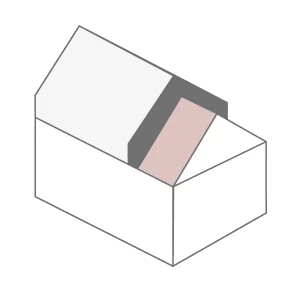

The process of a piggy back loft conversion involves constructing an additional loft space on top of your existing loft. This innovative technique not only saves time but also preserves the architectural integrity of your home.
Benefits of Piggy Back Loft Conversions:
Cost-Effective: Piggy back loft conversions often prove to be more cost-effective than other types of extensions since they utilize your existing loft structure and require fewer materials.
Time-Efficient: The construction timeline for a piggy back loft conversion is typically shorter than other extension methods, meaning you can enjoy your new space sooner.
Maximized Space: If you have limited outdoor space for an extension, a piggy back loft conversion makes the most of what you already have.
Enhanced Value: Adding functional space to your home naturally increases its market value, making piggy back loft conversions a wise investment.
Frequently Asked Questions About Loft Conversions
Do I need planning permission for a loft conversion?
Most loft conversions usually qualify as permitted development, meaning you typically don’t need planning permission if you meet certain criteria. Basic conversions with roof windows are usually fine, but double-check. However, you’ll need permission if you exceed specific limits or alter the roof space significantly.
Can I do a loft conversion under permitted development?
When considering a loft conversion, you can benefit from permitted development rights under certain conditions. To fall within these guidelines, your loft conversion must adhere to the following:
Volume Allowance:
*Terraced Houses: You can add up to 40 cubic metres of additional roof space.
*Detached and Semi-Detached Houses: You can add up to 50 cubic metres of extra roof space.
Roof Slope and Extension:
*The extension must not exceed the plane of the existing roof slope facing the main road.
*The highest point of the extension cannot surpass the highest point of the existing roof.
Materials and Appearance:
*The materials used for the conversion should match the current appearance of the house.
Outdoor Features:
*Verandas, balconies, and raised platforms are not allowed.
Side-Facing Windows:
*Side-facing windows must have obscured glazing.
*Any opening must be positioned at least 1.7 meters above the floor.
Roof Extension Placement:
*Roof extensions (except hip to gable ones) should be set back by approximately 20cm from the original eaves.
Outer Wall Overhang:
*The extension’s roof enlargement must not protrude beyond the outer face of the original house’s wall.
It’s important to be aware that not all properties are eligible for permitted development rights. Properties that do not qualify include:
*Flats and maisonettes.
*Properties located in conservation areas.
*Homes classified as listed buildings.
Do I need building regulations for a loft conversion?
If you’re considering a loft conversion, it’s important to understand the significance of building regulations approval. This approval is a mandatory step when you’re converting your loft or attic into a functional living space.
Thesebuilding regulations hold immense importance as they are designed to guarantee the safety and livability of your home.
They encompass a range of crucial aspects, including:
Structural Integrity: Assessing whether the newly constructed floor possesses adequate structural strength.
Overall Stability: Ensuring the stability of your entire loft structure, including the roofing.
Fire Safety: Implementing measures to ensure fire safety and establishing efficient escape routes.
Staircase and Floor Safety: Designing your stairs and new floor with utmost safety in mind.
Sound Insulation: Maintaining reasonable sound insulation between the converted space and existing rooms.
And More: These regulations cover various other vital factors.
Due to the intricate nature of these requirements, it’s imperative to collaborate with specialized professionals to meet them. Engaging experts like structural engineers will be essential. Your project will undergo a comprehensive assessment to ensure that all building regulations are met, leading to a successful and secure loft conversion
Popular Questions, you may be interested in
What is a planning application?
If you are looking to newly build,change the use of your land or building, or for a house extension this means you will need planning permission. A Planning Application includes details of your proposal which is then sent to the Local Planning Authority. LPAs will need to check you application and grant it so that you may start works. Quite simply, it is a way that your local council can check that the proposed development is designed with sensitivity to local guidelines and is suited to the relevant site, street, and area. If we did not have this system in place, we could find buildings that have no uniformity in their designs, form or function. This way, the United Kingdom which is rich in heritage can keep your home as part of it’s identity whilst allowing you to make exciting and necessary changes.
Local Planning Authorities are generally the local council borough and these LPAs will have guidelines and links to explain what are within your rights to make changes to your property. They are usually receptive to pre-applications, but since three years ago, most of the London Boroughs have adopted a fee for their pre-application advise. A good thing to know, no matter if you are doing a small single storey rear extension, a loft converson or a large new build – most LPAs take approximately 6 to 8 weeks to make a decision on your project.
How far can I extend without planning permission?
Single-Storey Rear Extensions: The good news is, if you live in a terrced or semi-detached house in 2020, Local Planning Authorities have relaxed the rules and allow for extensions to go to 6 meters . If you live in a detahced house, single storey rear extensions can be up to 8 meters in depth. Just be aware that if your property type is a flat, maisonette or in a conservation area, then you will need full planning permission.
Side Extensions: Side extensions fall under permitted developent if they do not extend more than half the width of the original house. You can extend a maximum of 3 meters as long as it is a single storey extension and does not extend pas the front elevation.
Double-Storey Extension: As of October 2019, new rules are being phased in which will allow homeowners to build extensions onto detached homes without requiring planning permission, under the usual rules of permitted development. This will make adding a two-storey extension to your home no more complicated than having a loft conversion. This doesn’t mean that there is no paperwork involved in undertaking a two-storey extension, but it will make obtaining permission for the extension much simpler.
Loft Extensions: Roof extensions/should be set back, as far as reasonably feasible by at least 20cm from the eaves, unless it is a hip or gable roof (measure the 20cm along the plane of the roof). The roof extension should not hang over the wall of the house.To be a Permitted Development any additional roof space created must not exceed these volume allowances: 40m3 on terraced or emi-detached houses, 50m3 on detached houses.
If you believe that your property falls under permitted development, the best way to ensure a positive result is to consult the advice of an Architect to ensure that your extension follows these rules which are applicable to all extensions:
- Materials should match the existing house
- No raised platforms, balconies, or terraces
- Single storey extensions should not be more than 3 meters high
- Must not be taller than the existing building
- The extension should not take more than 50% of garden space
Do I need planning permission for my proposal?
Permitted Development Rights are a set of policies which allow homeowners greater freedom to add value to their home whether it’s increasing your property price or simply to add floor space. By acting upon these rights you can extend your property to a certain degree, without the need for Full Planning Permission, which can be a more expensive and time-consuming process, as long as you comply with relevant rules.
This generally applies to the single-storey side or rear extensions, loft conversions, front porches, double storey extensions, outbuildings, solar panels, skylights of dormer windows and new windows or doors. However, even Permitted Development has its restrictions and does not cover double-storey extensions, larger loft conversions, flats or properties in conservation areas. Regardless, even if you meet all the requirements for Permitted Development, you will still need to submit your plans to council which they will need to check, and approve.
What choose Extension Architecture over Planning Consultants?
For a full planning application, you will need good knowledge of the local guidlines, an appropriate design and a full set of accurate architectural drawings. Many London Architects will do drawings but not offer extensive planning advice and submit your application on your behalf. On the other hand, Planning Counsultants have expert knowledge of regulations and can therefore play a vital role in obtaining permission for projects with complex needs, but where do both options leave you after your application has been granted…or refused? At Extension Architecture we understand that planning and building involves a lot of head-scratching, that’s why we guide you through the whole process, every step of the way. Extension Architecture specialises in design AND planning consulting and do not charge for submission and liaison with the council. We design, submit planning applications, building regulations with our in-house engineer, construct with trusted buiilders and offer creative interiors with our very own kitchen range. Why bother with the hassle if we can do it all for you?
Does my project need building approval?
Building Regulation drawings and control are very important because they insure the safety of people in buildings. Building approval means that your building complies with the national set of standards to protect people’s health and safety in and around buildings. Some examples of what building regulations include are structural calculations, fire-safety, insulation, damp-proofing, foundations, heating, ventilation and accessibilty. Once you have received planning permission, building regulation drawings will have to then be submitted and approved before you can start construction. Just remember, cow-boy builders are always risky business and Local authorities have power under the Building Act 1984 to enforce non-compliant building work altered or removed.
Do I need an architect for my home project?
Whether you are considering an extension, a plot development or a conversion, we are here to assist you in gaining LPA approval, maximising the potential of your project which in turn increases the value of your home. At Extension Architecture we offer bespoke packages to suit your budget, ensuring you get the perfect solution for you.
How do I envision how your proposed design will look?
We always provide 2D architectural drawings which detail the design in question. In more complex cases, we can provide 3D visualisations to bring your concepts to life and accurately display the proposed works.
How do I go about applying for planning permission?
A site assessment will be carried out, either in person or remotely, which will gather information on the existing site. After this, initial drawings are produced and options are discussed with our consultants which leads to amended drawings being made until both parties are happy. At this stage, the application is submitted to the local authority.
How do I get a free quote?
All you need to do is fill out our online form which provides us with more information about your project, this way we can get back to you with a more accurate quote. If you would prefer to speak to one of our planning consultants directly, you can call us on 0203 409 4215.


